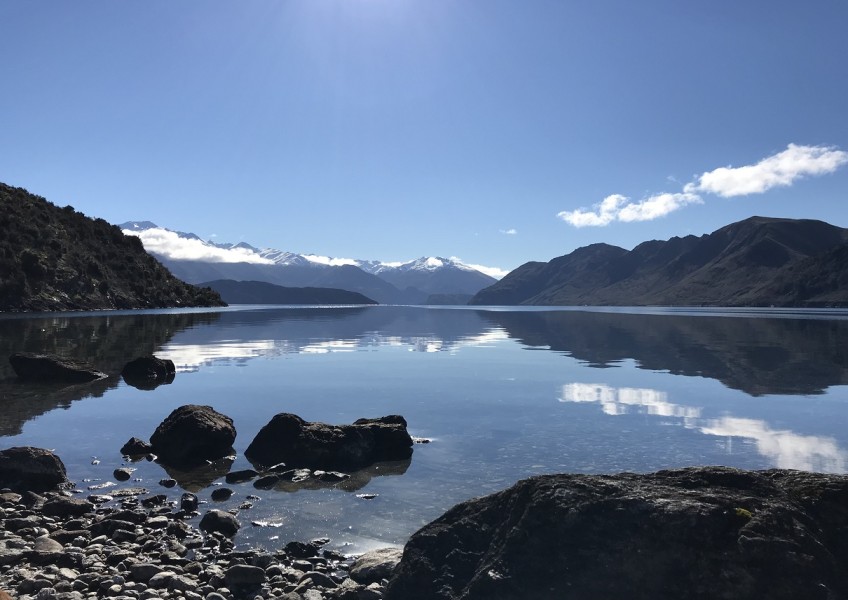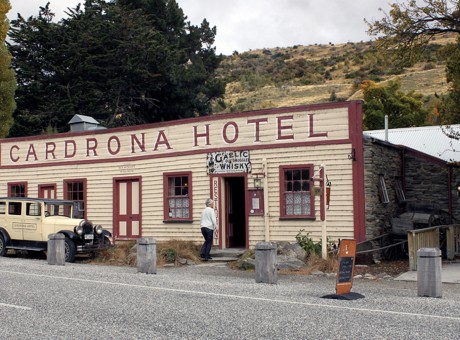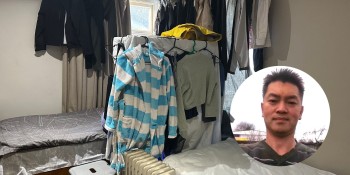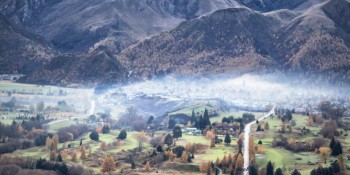An Incomprehensible Truth. We're failing to manage Southern Lakes water quality.

Andrew Waterworth has worked all over the world as a high-profile TV producer and journalist. In this article he looks at whether our efforts to protect local water quality are too little, too late. He also asks why we are not following the clear and successful examples set by other countries.
We are blessed with water in the Upper Clutha – Lakes Wanaka and Hawea, the mighty Clutha and its subsidiaries, the Hawea and Cardrona rivers. And beneath us lies the Wanaka Basin-Cardrona gravel aquifer, a reservoir for farming, rural communities and Wanaka itself.
There is so much water and it appears to us so vast, so majestic and so beautiful that we cannot imagine it being lost to us. Yet that is a real possibility. Not that the water will disappear or be used up – but that we will lose our water quality. How could that happen – very easily. Sooner perhaps than you think.
Our lakes and rivers are the proverbial jewels in the crown that attract people to live here, retire here and, most important for our economy, to visit Wanaka. Currently we get 1.6 million visitors a year, half of whom come just for the day. They want to soak up the glorious views, admire the pristine lakes and the stunning vista of snow-capped mountains, mesmerising reflections of the hills and peaks in the shimmering water, the vivid aqua blue of the Clutha river as it surges through Albert Town and on towards Central Otago. We live in a truly magical environment that is world class.
But at what point does the influx of new residents and visitors threaten this natural environment? When does growth reach a tipping point that could harm the very lifeblood of our home – our water?

A clogged local water filter - not a pretty sight, and a reminder that we can't always see evidence of water quality degradation until it's too late.
Change can happen surprisingly quickly. Take Lake Snow or Lake Snot as it’s less charmingly called. This algal species first came to notice in Lake Wanaka in 2003, followed by a major outbreak in 2007/8. By 2008, fishermen were reporting fouled lines and residents were complaining to council about clogged filters. Now Lake Snow is a widespread problem in Lake Wanaka and has been identified in nine lakes including Lakes Hawea, Wakatipu, Coleridge and Tekapo.
Lindavia intermedia, to give its scientific name isn’t harmful to people or animals but it is unsightly and costly to deal with: it coagulates into a mucus-like slime that gets caught up in fishing lines and reels, boat engines, it clogs up domestic and industrial machinery such as washing machines and water filters, it infests our drinking water and it’s unpleasant for swimmers as it clings to the human body. Not exactly a great selling point to our millions of tourists.
There are council plans to build a special treatment plant to deal with Lake Snow entering the water intake on the Beacon Point side of Roy’s Bay, having installed a filter on the west side water intake with limited success – at a cost of millions of dollars. It will be three to five years before the new plant is operational. Some Queenstown hotels have had to install expensive filters to maintain their hot water systems and water pressure at a cost of hundreds of thousands of dollars.
Meanwhile the QLDC has a put up a site advising residents about the Lake Snow problem and what to do.
Headlined, MANAGING ALGAE IN YOUR WATER SUPPLY, it lists some devices and businesses affected by algal slime: “Appliances and fittings that benefit from having a filter include direct electric and gas water heaters, under bench and bench top filters, dish washers and washing machines and irrigation fittings. Commercial operations such as breweries, dentists and commercial food premises may also be affected.”
The QLDC site goes on to advise that you may need to install a filter on your property water supply intake at a cost of $300-$500, not including the plumber’s time.
For more details, you can go onto the QLDC site here:
The disturbing facts about Lake Snow are that after it was first identified as a problem in Lake Wanaka 15 years ago, it appeared to be localised but since 2014 it’s spread rapidly in the Southern Great Lakes. It was identified through genetic analysis last year by Landcare Research as identical to a species of algae in Lake Youngs in Washington State in the United States. Due to a lack of government funding and a slow response from water management authorities ORC and QLDC, very little is known scientifically about Lake Snow. As Department of Zoology lake expert at the University of Otago, Dr Marc Schallenberg says on the university website: “why the algae do this (form slime) and what effects it has on the lake ecosystem and fishery are still unknown. Possible triggers for the bloom could be changing land use and increased nutrients in the lake, but the jury is out while research continues, he says”.
https://www.otago.ac.nz/profiles/otago015742.html
That means we so far have no tools for managing the algae – other than to fix up the mess.

The Clutha River. Too good, and too important, to fail in our efforts to improve water quality and discover the true reasons behind the spread of algae
That’s not a great model for environmental management and it doesn’t bode well for the future of our water quality. We can say with reasonable certainty that Lake Snow was somehow introduced to New Zealand from overseas (it’s not a native species), probably shortly before 2002 and that the risks of further environmental contamination and degradation of our water quality can only increase as the resident population and visitor numbers skyrocket over the next 40 years.
According to QLDC projections, the resident population of the Upper Clutha district will double to around 25,357 in just under 40 years (2018-2056), which means that dwellings are also due to rise, from 6412 in 2015 to 12,217 in 2058, adding nearly 6000 houses. Meanwhile peak visitor numbers will increase by 64% from 34000 a day to 56000 a day by 2058.
For more detail on these projections, go to the LINK forum site:
https://linkorgnz.files.wordpress.com/2017/10/link-forum-presentation-for-website1.pdf

Wanaka's Bullock Creek after contamination with sediment from sub-division development. Hardly an example of pristine water quality.
Inevitably, the dramatic increase in the number of people coming to the Upper Clutha district will impose a hefty impact on both our infrastructure (sewage treatment, water consumption, stormwater runoff) and on our natural environment, with potentially drastic consequences.
At that LINK forum, held in Wanaka in September 2017, LINK organisers presented us with the findings of their survey of more than 600 Upper Clutha residents which asked three questions:
1. What do you love about your community? The leading response was: Natural Environment.
2. How could it be even better?The leading response was: Better Planning.
3. How can you help? The leading response was “Volunteer my time”.
It doesn’t take a brain surgeon to deduce that since the people who come to live here and the visitors who travel from all over the world to Wanaka and the Upper Clutha do so because of the natural environment, it’s vital that we look after our water quality. It’s very easy to take for granted but it’s an expensive nightmare to fix if we allow it to deteriorate to a point where it stinks.
Right now there are issues with our water quality in Lake Wanaka which do impact on human health. I recently attended a stormwater workshop in Wanaka, hosted by the Upper Clutha Lakes Trust and was disturbed by what I heard. Water quality in Roy’s Bay – where locals and visitors swim – is compromised by stormwater. In 2017, Touchstone, a community based environmental group undertook a survey of water quality in Roy’s Bay. They discovered high levels of E.coli, raw sewage, including toilet paper, in the water. They identified the source as Stoney Creek which runs through a number of suburbs and new sub-divisions. The QLDC ran tests and swiftly identified the property. The culprit turned out to be a house in which the plumber had incorrectly fitted sewage pipes to the stormwater outflow. The problem, as Chris Arbuckle of Touchstone says, is that poor plumbing practices are not uncommon worldwide. The issue facing both us in the community and the council is that the more growth there is, statistically the more incidents we’re going to see like this one.

Touchstone's Chris Arbuckle, Eddie Spearing and Erica Van Reenan.
For more about Touchstone and the water monitoring work they do, go to:
https://www.touchstone.org.nz/
Chris Arbuckle’s team has identified close to forty stormwater outlets, of varying sizes and discharges around Roy’s Bay. One of the biggest and most problematic is the one flowing into Bremner Bay – a popular picnicking and swimming spot. Touchstone’s sampling shows that the water in Bremner Bay is already carrying high levels of bacterial contamination as well as sediments and rubbish, particularly plastic products. The stormwater drain that runs into Bremner Bay, just down from the carpark, serves a large catchment of established suburbs and new subdivisions, which means the problems are only going to get worse.
The reality is that whenever we get heavy rains in Wanaka, we’re going to see high levels of bacterial contamination and increased sedimentation in Roy’s Bay. That’s now. With all the subdivisions currently under way and resource consented, that problem is going to get much worse. When you replace fields, trees, vegetation and natural topography with houses, roads and pavements, you dramatically increase the stormwater runoff. The water that would normally and naturally soak into the ground and be absorbed by vegetation now falls on hard surfaces, collects and is channelled into drains which sooner or later flow into our lakes and rivers. As it runs off roofs, driveways, pavements and roads, that stormwater runoff picks up all kinds of contaminants, including oil and emissions from vehicles, brake dust and bacteria from animal waste and litter.
Imagine that kind of pollution winding up in our lakes and rivers from twice the number of dwellings, twice as many residents and nearly twice the current number of visitors parking their vehicles and using our infrastructure in less than forty years’ time, and it could ring the death knell for our pristine natural environment.

Run off from new subdivisions is an increasing problem, with no clear resolution in sight. Wanaka's Bullock Creek.
Add to that the high levels of sediment which are generated when a subdivision is under construction. A decent rainfall and you wind up with what happened to Bullock Creek, a spring fed creek that rises on what was the edge of Wanaka town and runs through the township and into the lake, beside the dinosaur park. In February this year, heavy rains collected a huge amount of sediment from the Alpha series sub-division which overflowed into Bullock Creek. This is what it looked like – a muddy brown mess from the old trout hatchery all the way to the lake – where our visitors go.
The trouble is sediment isn’t just ugly to look at, it can change the ecology of a creek and even a lake. And it’s not pleasant for tourists either – as they swim, they stir up the sediment making the supposedly pristine, crystal clear water slimy and murky.
The QLDC has recognised the problem and is negotiating with developers to take greater responsibility, but all this still falls way short of what is being applied in other countries.
There are technologies and practices which can be used to tackle these issues more sustainably and with greater emphasis on environmental impact but for some reason the QLDC seems slow on the uptake.
Why aren’t we using a more sustainable approach to waste water management, for example the British Geological Survey’s Sustainable Drainage Systems, http://www.bgs.ac.uk/suds/ , Northern Ireland’s Sustainable Stormwater Management plan, http://nwrm.eu/sites/default/files/regional-workshops/West/day%202/Peter_Close.pdf ; and Wales’ policy of Sustainable Drainage Systems, https://www.sudswales.com/types/ ?
We should be looking at recycling stormwater rather than dumping it into drains that feed into our lake and rivers, or into retention dams which are unfit for purpose. Such ponds result in an accumulation of contaminants and risk pollution through seepage into groundwater. There are recycling technologies available now and we could use the water for other purposes such as irrigation, golf courses etc. as they do in San Diego, California: https://www.sandiego.gov/water/recycled
In the US some municipalities have developed incentives for developers to adopt more sustainable and green approaches to stormwater. See Urban Stormwater Management in the United States, Page 81, https://www.epa.gov/sites/production/files/2015-11/documents/nrc_stormwaterreport.pdf
Also in Germany where environmentally sustainable policies have been implemented over the past 40 years: http://www.resilience.org/stories/2011-10-10/how-germany-became-europe%E2%80%99s-green-leader-look-four-decades-sustainable-policymaki/

Underwater rain cistern at a private house in Germany - why aren't we doing this here?
On a recent overseas trip, I visited my cousin who lives in Germany.
I asked what they do about storm water. They explained that under local authority regulations, every house has to have an underground cistern to collect and store rainwater and that all the downpipes from their roof feed into the cistern which is located on the property.
The cistern holds 6000 litres of water. It has a filter to trap any leaves or other matter and a ballcock sensor that monitors the water level.
The principle is simple and effective. Capture rainwater and manage it. When the cistern is full, the ballcock sensor activates the overflow which allows the water to flow out of the cistern and into the authority’s storm water drainage system. This means that the storm water drains don’t get overloaded when there is a downpour, thereby reducing pressure on infrastructure and also downstream on lakes, rivers or treatment plants, wherever the storm water eventually goes.
Even smarter, there is an option – which my cousin has gone for – and that is to recycle the rain water. They have a pump installed in the house which pumps rainwater out of the cistern and into the house where it feeds into pipes supplying the grey water system.
The rainwater is used to flush the toilets and to water the garden. It can also be used for washing clothes.
While the cistern has capacity, the sensor allows rainwater to be pumped into the domestic grey water system. When the water level in the cistern is too low, the cistern alerts the system indoors which switches from the cistern supply to the normal reticulated town water supply.

Lake Wanaka. How can we even consider not looking after such unique and precious natural beauty?
The economics are pretty straightforward too. Householders are charged for fresh water use and for rain/stormwater run-off, but there is a discount if you recycle your rainwater. The householder supplies the square meterage of their roof to the water authority so they can calculate a charge for rainwater runoff. If you have a cistern that recycles the rainwater, then the charge is not applied.
It’s a win/win/win/win – reducing stormwater runoff into the environment, reducing demand for water, reducing costs for the homeowner, reducing pressure on infrastructure and costs for the local authority.
Why can’t we be smart about how we manage stormwater here, factoring in the phenomenal growth that is projected for the region? Why can’t we think and plan ahead to ensure we maintain our water quality – for our future, for our kids’ future, for visitors and the economy?
We could just stick our heads in the sediment, go for growth and let someone in the future worry about how to fix the problems – but do we really want to wind up like the Rotorua Te Arawa lakes where water quality deteriorated over 30-40 years and which are now being cleaned up at a cost of $144 million, in a program that won’t be completed until 2032?
http://www.mfe.govt.nz/fresh-water/clean-projects/rotorua-te-arawa-lakes
The LINK survey strongly underscores the high value people in the Upper Clutha community place on our natural environment and our water quality. In June 2018, the Upper Clutha Lakes Trust was funded for five years by the Government’s Freshwater Improvement Fund (FIF), one of 34 projects nationally to improve freshwater management and the only project funded in the Otago region. The FIF fund focuses on water bodies in vulnerable catchments that are showing signs of stress, but which have not yet reached a tipping point. As well as supporting scientific monitoring of water quality in our lakes and rivers, they are also taking a proactive approach, asking volunteers to donate time on projects like tree planting or give financial support. If you want to help, this is where you can find out more:
https://www.uppercluthalakestrust.org/your-water/district/wanaka-water-project/
We are unbelievably fortunate here in the Southern Lakes – we live in one of the most pristine and beautiful places in the world. But if we don’t protect our water quality, we could lose it all. That’s not smart or sustainable.
 Andrew Waterworth has had a 40 year career in television, working for Natural History New Zealand in Dunedin from 2000 to 2015 as Executive Producer and, for the latter five years, as Head of Production/Executive Producer. Prior to this, he worked in Australia and New Zealand reporting and producing political, social and science stories, including on ABC TV’s Nationwide, 7:30 Report and Quantum programmes, and Beyond Productions’ Beyond 2000.
Andrew Waterworth has had a 40 year career in television, working for Natural History New Zealand in Dunedin from 2000 to 2015 as Executive Producer and, for the latter five years, as Head of Production/Executive Producer. Prior to this, he worked in Australia and New Zealand reporting and producing political, social and science stories, including on ABC TV’s Nationwide, 7:30 Report and Quantum programmes, and Beyond Productions’ Beyond 2000.
Read: Andrew's piece on QLDC consultation and the new Wanaka masterplan.
Read: Andrew Waterworth on Over-tourism - one of the most widely read articles published by Crux.


























